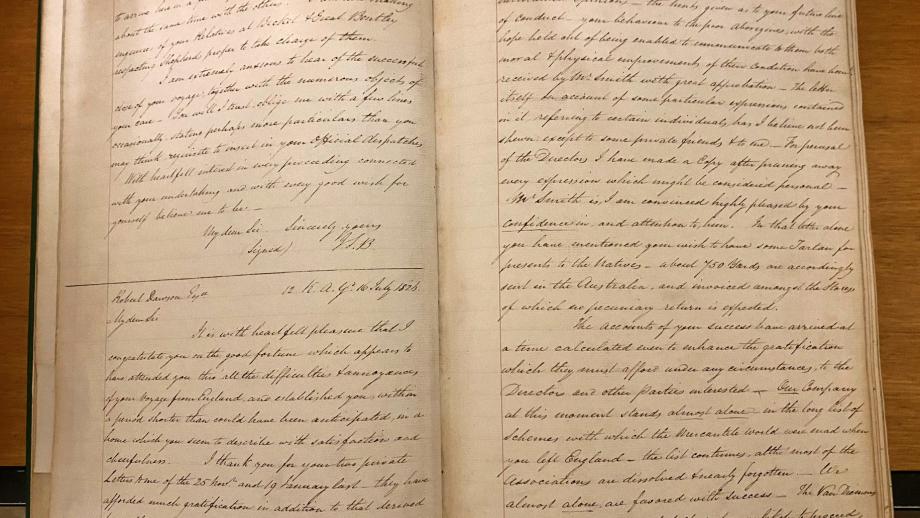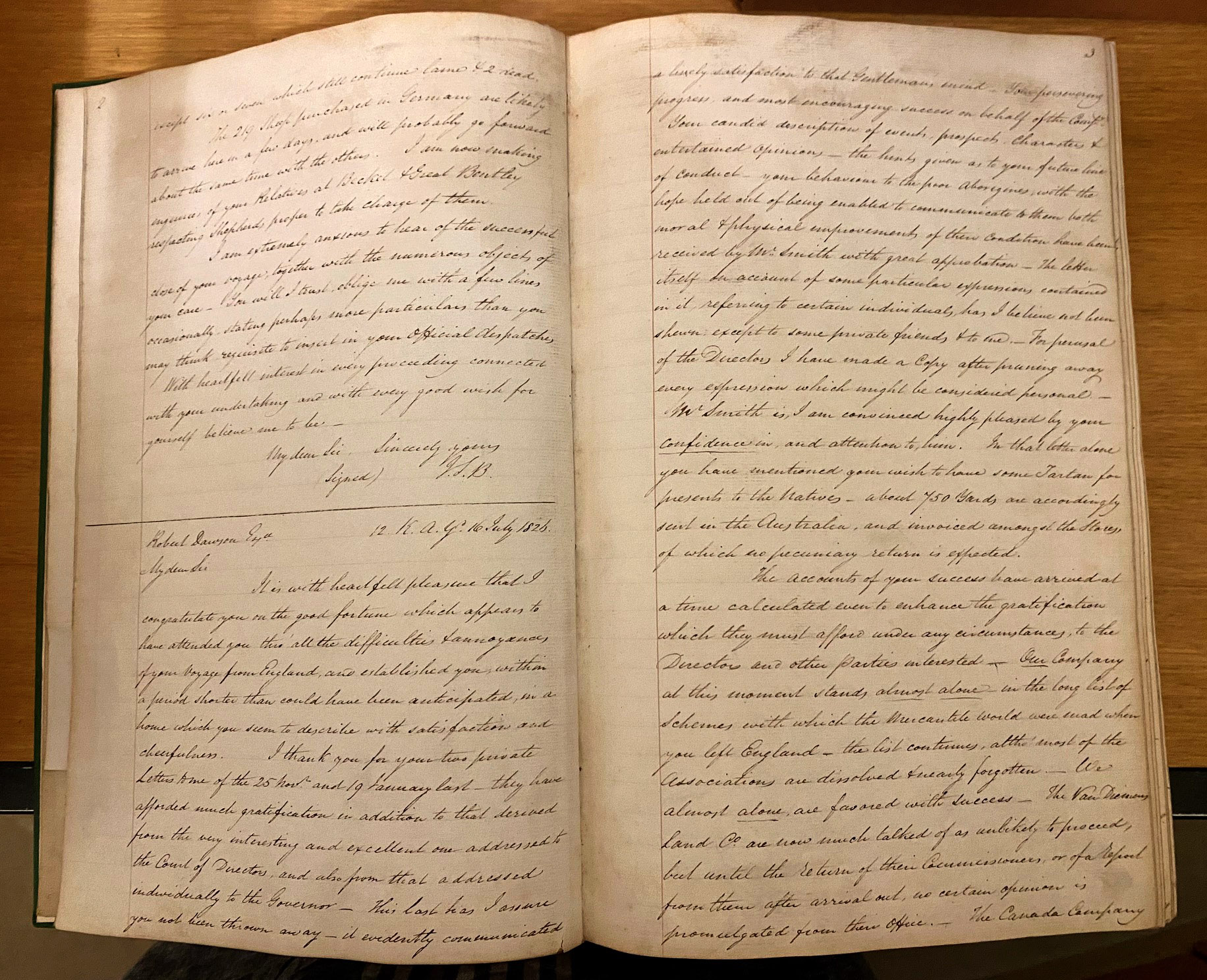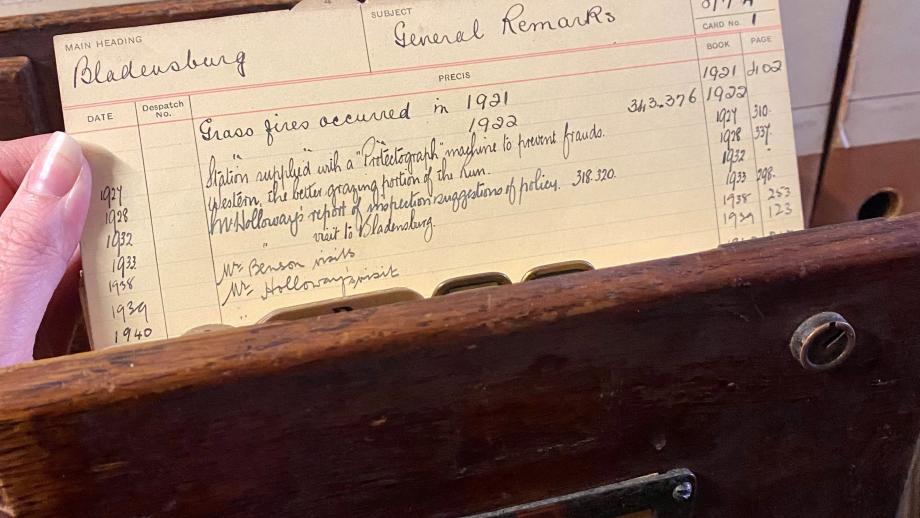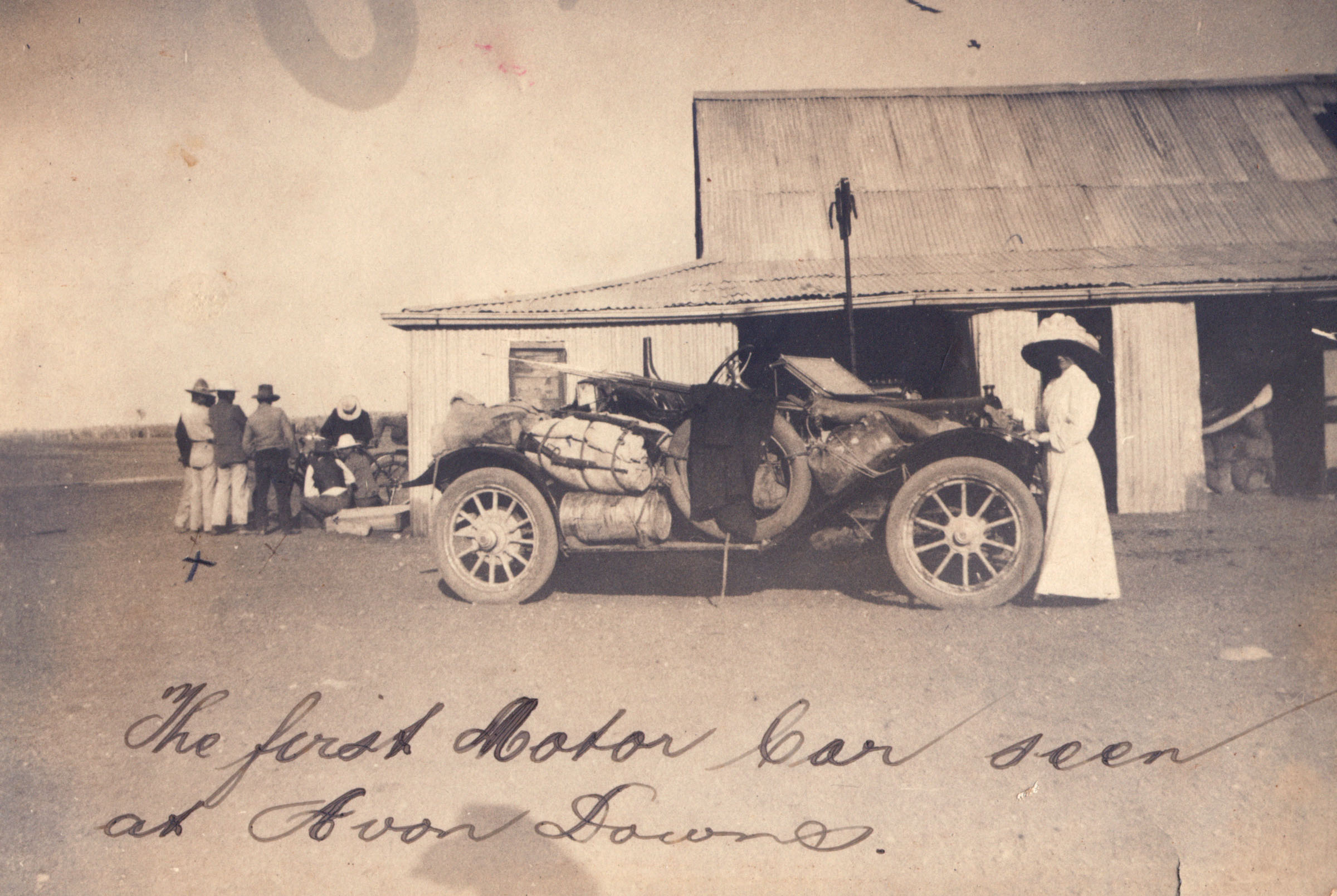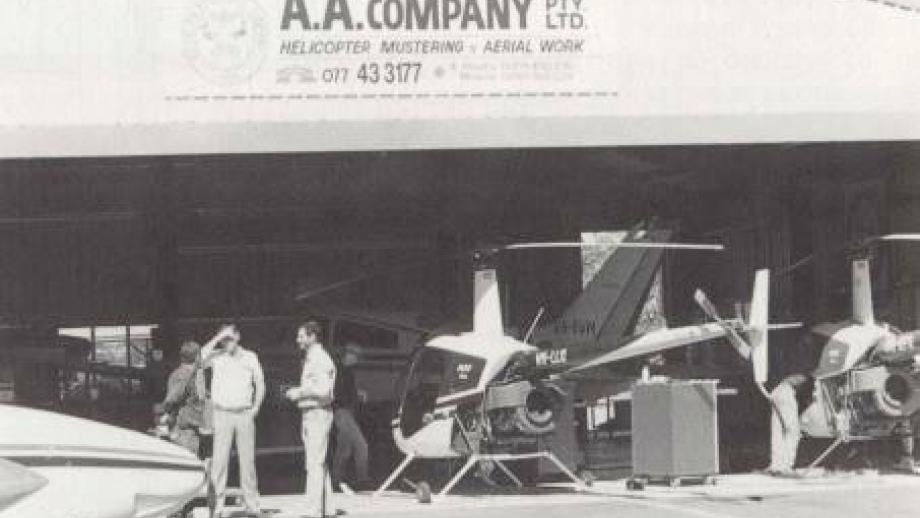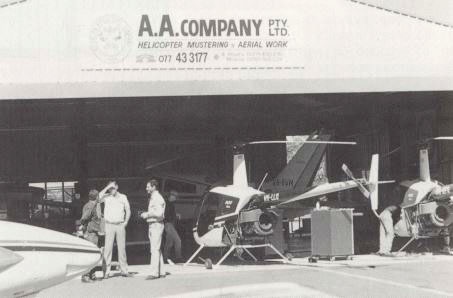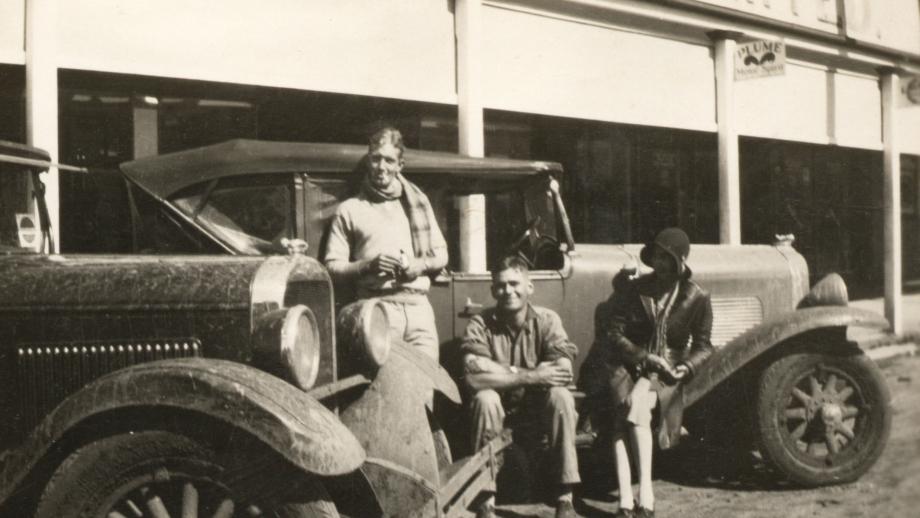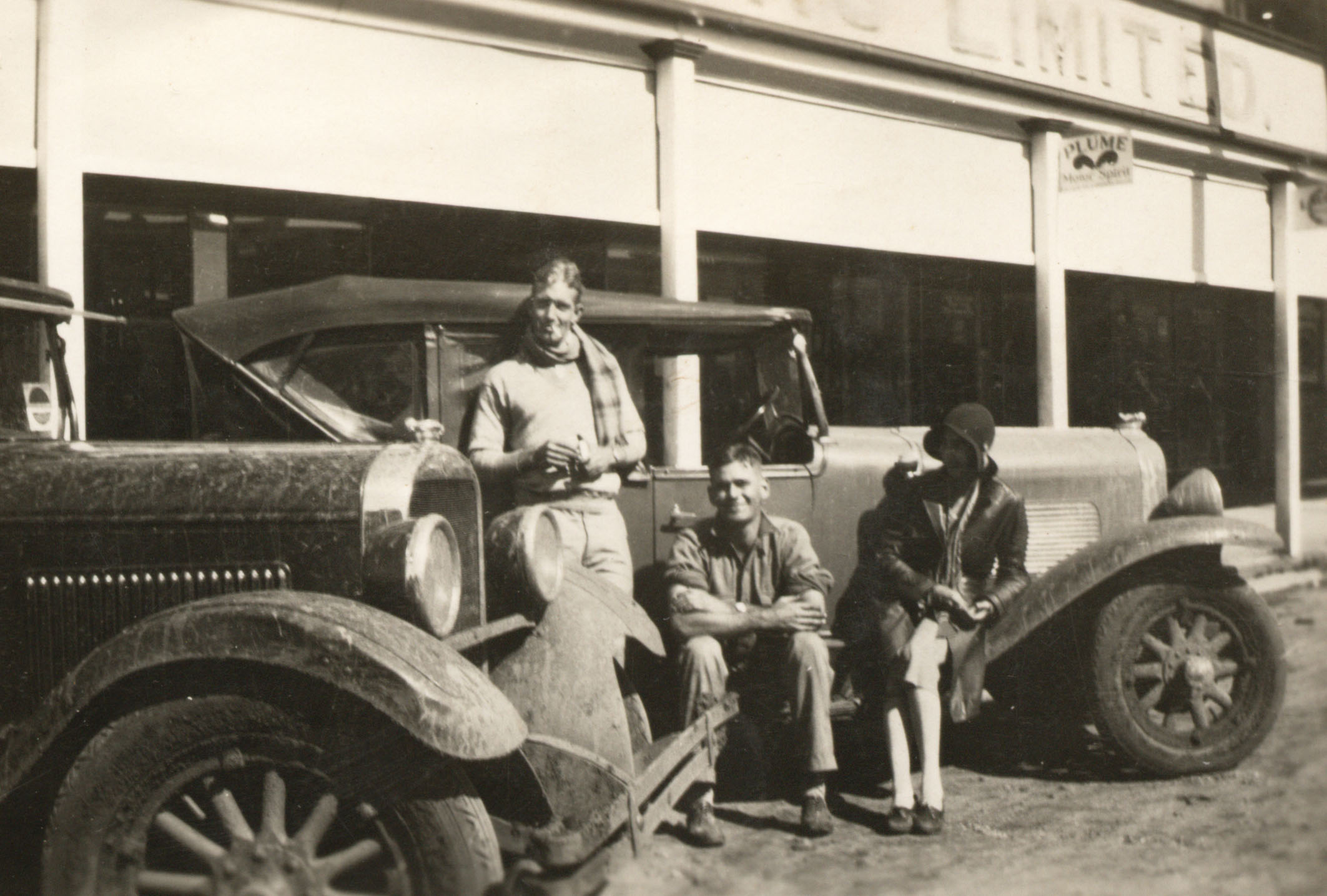Communications and Technology
With mail steamships not commencing regular services until the 1850s, the Australian Agricultural Company’s correspondence was transported by sailing ships which travelled between Britain and Australia via India and the Cape of Good Hope. Their timing and route was dictated by the changing seasonal wind patterns. Owing to these irregularities, and regular shipping disasters, the Company’s despatches were sent in triplicate by different ships, increasing their chances of reaching their destination safely. On arrival in London the despatches were registered, with the date of their arrival recorded on the top of the first page.
Before this, mail travelled from Australia to India, then along the Red Sea to the Suez Canal where the mail and passengers would be offloaded, to cross (by camel, and after 1858 by train) to Cairo and Alexandria. The mail and passengers then boarded a ship to Brindisi (later Trieste) where the mail and some passengers disembarked to continue their journey by train and Channel ferry. The remainder of the passengers and the heavier goods would continue by sea to Southampton in England. This overland route was replaced by the Suez Canal in 1869.
At least twice a year a box would be sent from Australia to London with all the Company’s reports, statistics, and samples.
Airmail between England and Australia was established in 1919, with the main change being that airmail paper replaced the heavier bond paper used previously.
The incoming despatches were bound and indexed at the end of each year. Sometimes the index was held in a separate volume for easier use. Routine incoming mail was folded, annotated with the name of the writer, a summary of the contents, the date written, and the date of reply.
Copies of outgoing mail were made in copy books until the introduction of the press copy book circa 1860. All mail was handwritten until 1898 when a typewriter was purchased, and a young lady was employed by the Company to use it.
In and out mail was filed separately until 1905. From 1912 to 1952 the in (original) and out (carbon copy) mail was filed alphabetically by subject, with a separate file for each year.
The first Australian telegraph was a private line between Melbourne and Williamstown in 1854. The line from Sydney to Liverpool was completed in 1857. The Newcastle telegraph office was opened in 1860. By the mid-1860s it was possible to send a telegram from Newcastle to Sydney / Melbourne / Adelaide / King George’s Sound (Albany). There the telegram would be printed out, handed to the ship’s captain, whom on reaching India, would hand it in at the telegraph office, and the message would continue through the telegraph system to London. Telegrams were the main means of "quick" communication for the Company and its stations well into the 20th century.
The first cable by the Overland Telegraph (Adelaide to Darwin and the submarine cable to Banjoewangi in Java), was sent in 1872. Transmission took about 24 hours from Newcastle to London. Finally, in 1872 a telegraph line running 1,800 miles from Darwin to Adelaide, the Overland Telegraph, was completed, linking Australia to the rest of the world by undersea cable, and making communications much more efficient. Cables were very expensive at £9 per word so both public and private codes were used. It was customary at the beginning of each despatch to cite both incoming and outgoing telegrams in both code and in clear so that they could be checked, and the matter taken up with the telegraph office. As the cables had to be ‘read’ and ‘re-entered’ at each repeater station, errors were regularly made. The Australian Agricultural Company was issued with the telegraph addresses ‘Argyle London’ and ‘Argyle Newcastle’ – hence the name of Argyle House for the office in Newcastle, and the adjoining Argyle Street.
The Newcastle Telephone Exchange opened in 1890, allowing the Company to make local telephone calls. Calls to Sydney and Melbourne were possible from 1898. These calls were made from the Telegraph Office, one caller at a time, at a cost of 3 shillings for 3 minutes. With a miner’s wages totalling 8 shillings a day, these calls were prohibitively expensive. It wasn’t until 1967 that subscriber trunk dialling (STD) was introduced, meaning telephone calls would no longer need to go through the telephone exchange.
Mail to many of the pastoral stations was delivered monthly. For example, mail to and from Avon Downs Station in the Northern Territory’s Barkly Tablelands was sent monthly, usually by a team of six pack horses that travelled the long stock route through Ranken, Alexandria, Alroy Downs, Brunette Downs, Anthony Lagoon, Wallhollow, Top Springs, McArthur River, and Borroloola. The teams changed at staging camps located at every station. Even after motor cars arrived circa 1920s, horses were still needed for deliveries, with cars unable to get through during the wet season.
Over time, technology has transformed the Company's stations. In the early days, stock management relied on manual labor and visual observation, with jackeroos tracking stock on horseback.
The late 19th century introduced wire fencing and improved grazing control, while the 20th century introduced machinery which enhanced farming efficiency, while telegraph lines improved communication and coordination. Mid-20th-century innovations included two-way radio communication and aircraft for aerial surveys and mustering.
As time progressed, technology continued to revolutionise the Company's cattle stations. Solar and wind-powered water pumps provided reliable water sources, and the transition to digital data management improved recordkeeping. GPS technology and the advent of the internet and satellite communication further enhanced navigation, information access, and remote communication.
The Company operates an impressive fleet to keep its business moving, with 7 road trains, 100 earth movers, 5 aircraft, 90 motorbikes, 160 cars and 80 trucks.
Recent advancements, like electronic tagging, RFID systems, and GPS-based collars, have enabled precise livestock tracking, benefitting health management and grazing strategies and allowing the Company's cattle stations to thrive in the vast, remote Australian landscape.
